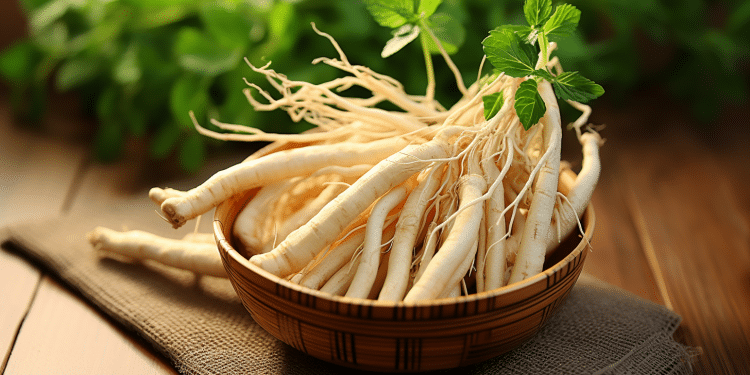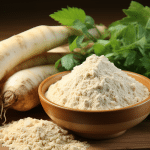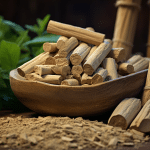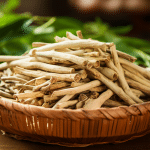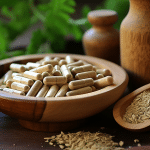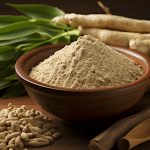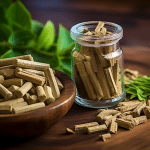There are two popular plant roots widely discussed and consumed by millions of people worldwide, Tongkat Ali (Malaysias Ginseng) and Panax Ginseng (Korean, Asiatic or Chinese Ginseng). When considering Tongkat Ali vs Ginseng, both Panax Ginseng and Tongkat Ali have been consumed for centuries, dating from 1600, and supported by hundreds of studies and clinical trials starting from back in the early 1970s. However, they are from different families of trees, therefore each root contains unique bioactive compounds that may benefit your health in a variety of ways.
You can find our favorite Tongkat Ali supplement on the following page of our website to learn more:
Choosing between Tongkat Ali or Panax Ginseng depends heavily on your health goals. And with that said, let us explore how each herb may help you achieve your health goals. Before diving in, here are the main similarities and differences that you need to know.
Key Similarities Between Tongkat Ali and Ginseng
Tongkat Ali is known as the ginseng of Malaysia, the word ginseng referring to the roots of a plant that has healing properties. Both Tongkat Ali and Panax Ginseng are beneficial for men and women. Tongkat Ali and Panax Ginseng can be consumed as tea, coffee, or even as capsules. Both herbs have been used for centuries to boost health.
Studies show that both Tongkat Ali (Malaysias Ginseng) and Panax Ginseng have similar active ingredients like saponins and polysaccharides, but they are found in different amounts. Polysaccharides are polymeric carbohydrates primarily used to store energy and to support cells and tissues. Studies show that polysulfate polysaccharides exhibit immunomodulatory, antitumor, anti-inflammatory, antimicrobial, and antiviral activities, including against HIV, herpes, and hepatitis viruses.
Saponins are commonly used in vaccine formulations for modulating immunological functions. Studies have shown that saponin lowers cholesterol levels, kills disease-causing bacteria, eliminates oxidative stress, and suppresses cancer growth. Saponin has been linked to a variety of biological activities, such as anti-inflammatory, cholesterol-lowering, and anticancer properties.
Key Differences Between Tongkat Ali and Ginseng
Tongkat Ali has unique bioactive ingredients like Eurycomanone, Eurypeptides, which are more and more known for providing superior hormonal effects for testosterone and cortisol levels when compared with Panax Ginseng. Panax Ginseng has a unique bioactive ingredient known as ginsenosides, which provide a wide array of health benefits and is used to promote overall wellbeing and longevity. Tongkat Ali is considered one of the best natural libido and sexual desire enhancers, proven to improve ED symptoms and can boost sperm concentration and motility. Panax Ginseng works best in stimulating brain functions and acting as a powerful antioxidant than Tongkat Ali.
More on the Differences Between Tongkat Ali and Panax Ginseng
Tongkat Ali comes from the Eurycoma longifolia plant, which belongs to the family of trees known as the Symaroubaceae. Panax Ginseng comes from family tree known as Araliaceae.
At first sight, the tongkat Ali might appear to be similar to Panax Ginseng; both roots are strong, pale brown in color, with an off-yellowish hue. Most people cannot tell the difference on the surface, but just like any plant-based adaptogen, they both contain similar bioactive ingredients which can be beneficial for overall health.
Tongkat Ali vs Panax Ginseng: Saponin Levels
By late 2012, scientists had reported detecting at least 289 saponins in 11 different species of Panax. On average, the proportion of saponins found in Panax ginseng was 2-3%. However, the highest amount of saponin which could be extracted from Panax Ginseng using freezing-drying method as well as the water method is about 13.87% of dry weight of the ginseng. This was done in an independent study using chromatography tests of frozen-dried ginseng extract.
Panax Ginseng vs. Tongkat Ali: So Which is better?
Tongkat Ali and Panax Ginseng may share similarities as well as clear differences, but each offers its own unique suite of health benefits thanks to their bioactive ingredients. Picking the clear winner depends heavily on your health goals. If you are a woman, research and clinical trials show Tongkat Ali benefits female health in 5 key areas.
From a benefits perspective, the Malaysian ginseng can beat or match the panax ginseng. Now, let us look at Tongkat Ali versus Panax Ginseng to see which plant works best for these particular health benefits. Ginseng has a higher amount of antioxidants compared to Tongkat Ali. One study reported Ginseng has sufficient antioxidants for building a better immune system, while research from Japanese scientists showed that Tongkat Ali is able to build a stronger immune system with higher numbers of T cells and CD4+ cells.
Ginseng works better than Tongkat Ali in improving heart health. Ginseng can be helpful in improving heart disease. Tongkat Ali is superior to ginseng in increasing testosterone levels.
Ginseng has no testosterone effects when compared with Tongkat Ali, which has been found to have a significant effect on testosterone by a number of studies and scientific trials that involved men and women aged between 24 to 70 years. Studies showed that Ginseng may be an appropriate alternative for the promotion of health in menopausal women, as well as for sexual functioning. On the other hand, studies of Tongkat Ali show that it may promote the health of women by increasing testosterone, and estrogen, as well as by balancing out the hormone cortisol, among women in all age groups, including menopausal women. Ginseng has been shown to have more severe side effects compared with Tongkat Ali.
There are major safety issues with consuming Ginseng reported since 1978 by scientists and researchers worldwide, as opposed to Tongkat Ali’s milder side effects. Tongkat Ali, by contrast, has fewer side effects, such as stomach discomfort and a slight sleeplessness. Most consumers reported no side effects while taking Tongkat Ali at its recommended daily dose.
Learn more:
